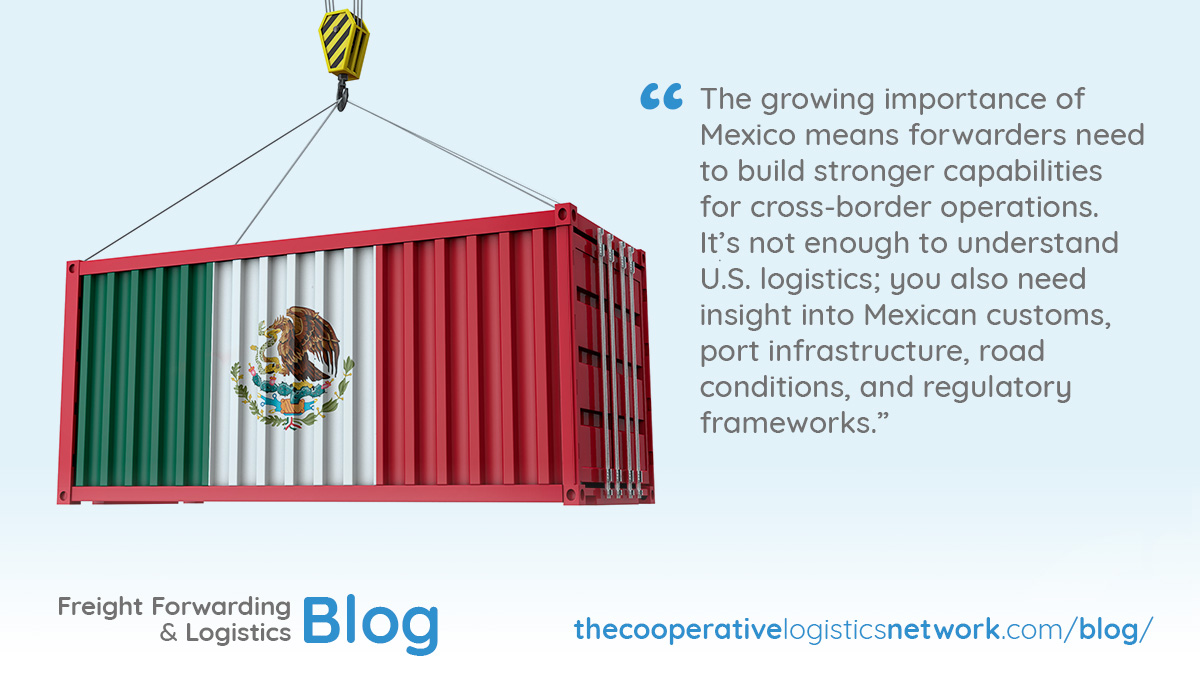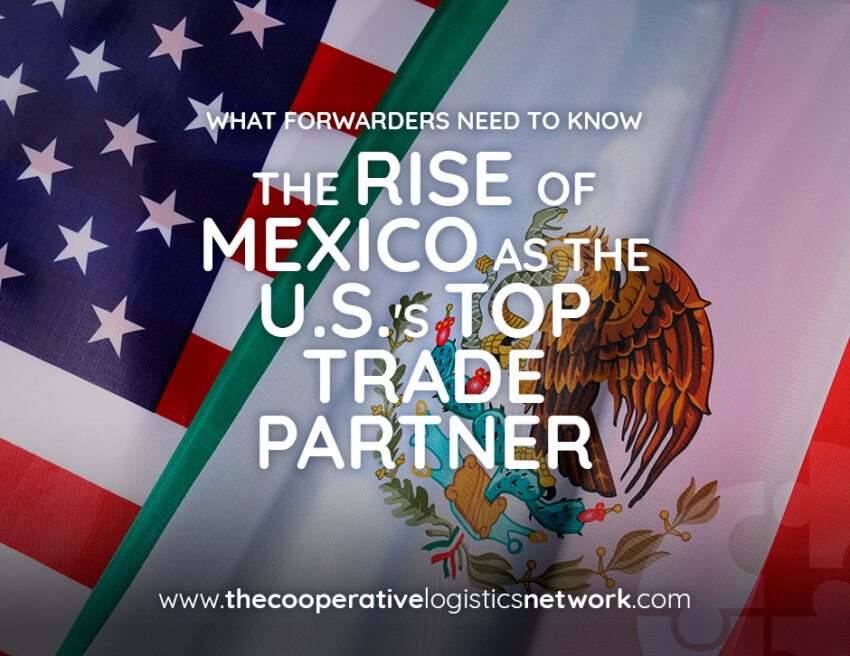In 2024, Mexico officially became the United States’ top trading partner, surpassing China for the first time in decades. This isn’t just a data point but a signal of deep shifts in global trade, manufacturing strategies, and logistics networks. For freight forwarders in the USA, it’s a moment of both challenge and opportunity. Understanding what’s driving this shift and how to respond strategically could shape the next phase of your business.
Let’s break it down.
Why Mexico overtook China
There are several reasons behind this historic trade shake-up. One of the biggest drivers is the evolving geopolitics between the U.S. and China. With ongoing tariffs, export controls, and rising diplomatic tensions, many U.S. companies began rethinking their dependence on Chinese manufacturing. Add to that the lingering disruptions from the pandemic and the global supply chain bottlenecks of recent years, and it’s no surprise businesses started looking closer to home.
That’s where Mexico comes in.
Mexico offers geographical proximity, faster lead times, and access to a skilled workforce. But more importantly, the U.S.–Mexico–Canada Agreement (USMCA), which replaced NAFTA in 2020, gave North American trade a major refresh. It streamlined customs processes, updated rules of origin, and included provisions to encourage manufacturing across the region. All of this makes Mexico an ideal nearshoring destination for U.S. companies looking to build more resilient, cost-effective supply chains.

Nearshoring and the logistics advantage
Nearshoring isn’t just a buzzword, it’s happening in real time. Manufacturing is moving from Asia to Mexico across multiple industries, from automotive and electronics to textiles and consumer goods. And every shift in production brings with it new logistics demands.
For freight forwarders in the USA, this is huge. Cross-border trucking, rail freight, and multimodal solutions are now central to supply chains that were once dominated by ocean routes. That means greater demand for customs brokerage, bonded warehousing, last-mile delivery, and end-to-end logistics coordination between the U.S. and Mexico.
This change opens the door for smaller and mid-sized forwarders, especially those who are agile, knowledgeable about cross-border regulations, and well-connected in both countries. The big players aren’t the only ones winning the business, regional expertise is now more valuable than ever.
Hot trade lanes between the U.S. and Mexico
The busiest trade routes tell a clear story. Texas continues to be the dominant gateway for cross-border trade, with Laredo ranking as the largest inland port in the U.S. Other major border crossings like El Paso, Nogales, and Otay Mesa are also seeing spikes in freight volumes.
Northbound, U.S. imports from Mexico include everything from auto parts and agricultural products to electronics and industrial machinery. Southbound, exports to Mexico focus on refined petroleum, tech equipment, and raw materials. These flows are becoming increasingly sophisticated, requiring freight forwarders in the USA to offer smarter routing, better visibility, and tailored solutions for customers.
Rail freight is also seeing a boom. With major investments from companies like Canadian Pacific Kansas City (CPKC), new rail corridors are creating faster, greener alternatives to trucking, especially for long-haul shipments.
What this means for freight forwarders in USA
Let’s be clear: this isn’t just a regional shift, it’s a global pivot with real consequences for U.S.-based freight forwarders. The growing importance of Mexico means forwarders need to build stronger capabilities for cross-border operations. It’s not enough to understand U.S. logistics; you also need insight into Mexican customs, port infrastructure, road conditions, and regulatory frameworks. The most successful forwarders will be those who can offer a seamless experience from warehouse to warehouse, regardless of which side of the border the cargo sits on.
At the same time, this trade shift is pushing many logistics companies to rethink their global strategies. If Mexico is rising, what does that mean for China and other Asian markets? Should you double down on Latin America? Diversify your partnerships? Expand warehousing near U.S. ports of entry?
There are no easy answers, but there are clear advantages for those who stay informed and stay connected.
Why being part of a global freight network matters more than ever
In this evolving landscape, one thing is becoming increasingly obvious: no freight forwarder can thrive alone. Especially when navigating complex international relationships and volatile supply chains, having the right global partners makes all the difference.
That’s where The Cooperative Logistics Network comes in. For freight forwarders in the USA, being part of a well-established freight network like The Cooperative offers several strategic advantages. You get access to vetted agents in Mexico and across 130+ countries. You gain financial protection that reduces the risks of working with unknown overseas partners. And most importantly, you can offer global coverage while staying focused on what you do best locally.
The Cooperative is built around collaboration and transparency, ensuring that members don’t compete with each other and can rely on one another for reliable, secure cargo handling across borders. In a world where your clients expect global service with local attention, that’s a powerful value proposition.
What freight forwarders in USA should do now
If you’re a freight forwarder in USA, this is the moment to sharpen your strategy. Start by identifying which of your clients are expanding operations in Mexico. Offer them logistics insights they haven’t thought about yet—whether it’s optimizing cross-border clearance, managing peak season volumes, or improving visibility with new tech tools.
Invest in building relationships with trusted partners south of the border. Train your teams on USMCA requirements. And don’t ignore the role of rail, which may soon become the preferred mode for certain trade lanes.
Most importantly, keep evolving. The shift toward Mexico isn’t a temporary blip. It’s part of a larger realignment in global trade. Staying passive means falling behind, while staying connected—through data, partnerships, and proactive strategies—means future-proofing your business.
Looking ahead
Mexico’s rise as the top U.S. trade partner is a wake-up call for everyone in logistics. It’s not just about proximity. It’s about agility, diversification, and building networks that can withstand disruption. Freight forwarders in the USA are in a strong position to lead this shift—if they’re willing to adapt.
Now’s the time to move. Trade flows are changing. Clients are demanding more. And those who embrace this moment with the right tools and partners are going to come out ahead.


